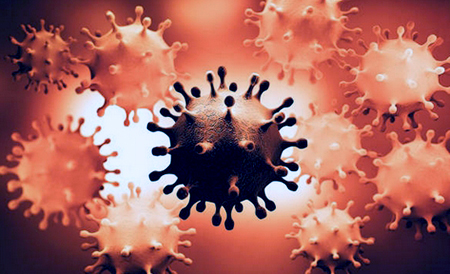What are bacterial infections of the respiratory tract?


From year to year, infectious diseases of the upper respiratory tract (URT) and ENT organs occupy the 1st place in the structure of the overall morbidity in the world. According to the WHO, the pathology of the respiratory tract was included in the five main causes of death in the world's population. In the structure of the outpatient-polyclinic link, patients with pathology of the upper respiratory tract and ENT organs make up 15%. An increase in the number of antibiotic-resistant strains of bacteria is observed, the frequency of immunodeficiency and allergic diseases is increasing, which, along with inadequate treatment, leads to a raise in the number of chronic processes. This dictates the need for a more thorough and rational approach to the choice of therapy for infectious and inflammatory diseases of the upper respiratory tract in both children and adults.
What causes respiratory tract infections?

The cause of the development of the vast majority of cases of acute inflammation in the upper respiratory tract is parainfluenza, influenza, and rhinovirus viruses. Viruses are the initial link in the chain of pathological changes that can subsequently lead to the development of severe bacterial processes in the upper and lower respiratory tract.
Rhinoviruses and coronaviruses are quite common and are responsible for a significant proportion of cases of the so-called "common cold".
Adenoviruses cause less than 10% of all respiratory diseases, most of which are mild or asymptomatic. The most common manifestations of these diseases are pharyngitis and conjunctivitis, which are accompanied by an increase in body temperature.
Coxsackie viruses type A and B mainly cause diseases of the nasopharynx.
In recent years, the increasing role of "atypical" bacterial pathogens, such as mycoplasma and chlamydia, in the etiology of acute respiratory diseases and other respiratory tract infections, including pharyngitis, tonsillitis, otitis media, bronchitis, pneumonia, etc., has been noted.
Bacterial infections usually join the viral infection in lack of adequate treatment and the presence of aggravating factors, for instance, deviated nasal septum, adenoids, smoking, poor ecology, diet deficient with nutrients and vitamins, and so on.
Bacterial pathogens cause diseases such as acute pharyngitis, follicular and lacunar tonsillitis, sinusitis.
Clinical syndromes of acute respiratory infections of bacterial etiology
Symptoms of respiratory tract infections
Depending on the etiological (causative) agent and the localization of inflammation, the symptoms of URT diseases are very different and consist of symptoms of general intoxication and local pathological changes. However, symptoms such as a runny nose and cough are common to all acute respiratory viral infections.
A runny nose is the very first harbinger of a common cold, then cough, sore throat, high fever are added to it. With a cold, the production of secreted mucus increases, its composition changes with an increase in the number of mucins. In addition, the patient feels dryness in the nasopharynx, perspiration; sometimes a runny nose is accompanied by a heaviness in the head and a stuffy ear. The sense of smell, and in some cases, and hearing decreases (due to impaired patency of the Eustachian tube). Because of the frivolous attitude to the "mild cold", the runny nose becomes chronic or causes the development of tracheobronchitis. To stop the phenomena of local inflammation in the nasal cavity and prevent complications, it is necessary to use decongestants, i.e. vasoconstrictor nasal sprays or drops.

Decongestants are crucial for the therapy of acute inflammation of the upper respiratory tract as they provide a quick restoration of the patency of the nasal passages, facilitate nasal breathing, drainage and aeration of the paranasal sinuses. However, when using vasoconstrictors, it is important to remember that most of them are not recommended for long course - more than 7 consecutive days.
Besides, a patient must not exceed the doses indicated in the package insert.
The best option for the treatment of rhinitis is a drug that has both anti-inflammatory, antimicrobial, immunomodulatory and secretolytic effects. At the same time, given the large number of chemical drugs that patients take, the high level of allergization of the population, it is advisable to give preference to herbal drugs, which makes it possible to reduce the drug load on the body and reduce the likelihood of side effects.
Coughing fits always come unexpectedly, attracting the attention of others. The patient tries to be in public places less often, fearing to cause infection, to cause displeasure in others. Social activity is reduced to a minimum, a depressive state develops, discomfort arises in the family and at work.
A cough appears in response to the penetration of a pathogen into the upper respiratory tract. The virus, fixing and multiplying on the surface of the mucous membrane, has a cytopathic effect on the tissues, which leads to desquamation of the epithelium, a sharp plethora of blood vessels of the microvasculature, an increase in their permeability, edema of the mucous membrane and submucosa, changes in the coordination and efficiency of cilia activity.

Due to edema and impaired drainage of the respiratory tract, secretion stagnation occurs, ventilation is impaired and hypoxia develops, which serves as a starting point for the activation of saprophytic flora and can lead to an aggravation of the course of the disease and the the secret becomes viscous and thick. An increase in mucus formation is accompanied by a decrease in the antibacterial and antiviral activity of the secretion due to a decrease in the concentration of secretory IgA, interferon, lactoferrin and lysozyme in it. The fraction of the gel begins to prevail over the sol. The viscosity of mucus with a weakening of the function of the ciliated epithelium leads to a slowdown in its movement along the URT. This, in turn, promotes increased adhesion of pathogenic microorganisms to the mucous membrane of the upper respiratory tract and creates favorable conditions for microbial colonization. The cough is designed to clear the upper respiratory tract from pathological secretions (sputum). Rheological studies of sputum have shown that the substrate is a highly structured thixotropic viscous liquid. In this situation, pharmacological effects and careful selection of expectorants of various origins, taking into account their mechanisms of action, are decisive for the correction of mucociliary clearance.
Treatment of bacterial respiratory tract infections

The treatment of bacterial infections of respiratory tract is aimed at the elimination of the pathogen, facilitation of sputum (discharges) outflow, and reduction of symptoms. The main role is given to antibiotics (for instance, Cefaclor) that kill the causative agent and expectorants, i.e. medicines that promote the secretion of mucus and lower its thickness.
A number of studies have confirmed the antimicrobial and expectorant effect of eucalyptus oil. Pine oil also has an antimicrobial effect, and due to pinene it can significantly improve microcirculation.
The effectiveness of the drug is enhanced by several routes of administration into the body. During inhalation, eucalyptus and coniferous oils directly reach the upper respiratory tract. The active substances of the oils are well absorbed through the skin and enter the organs and tissues, including the lungs, from where they are partially excreted during respiration. The action that occurs during inhalation is potentiated by taking warm baths, which promote increased sweating and excretion of microorganisms and toxins that cause disease.
As you can see, it is not only safer but also highly recommended to use plant-based medicines in the treatment of bacterial infections of respiratory tract. But you should keep in mind that untimely or improper use of antibiotics can aggravate the flow of the disease and cause severe complications. So do not try to stick to natural remedies only.
Post by: Kylie Richardson, General Practitioner, Rotterdam, Netherlands
(Updated at Apr 15 / 2024)
